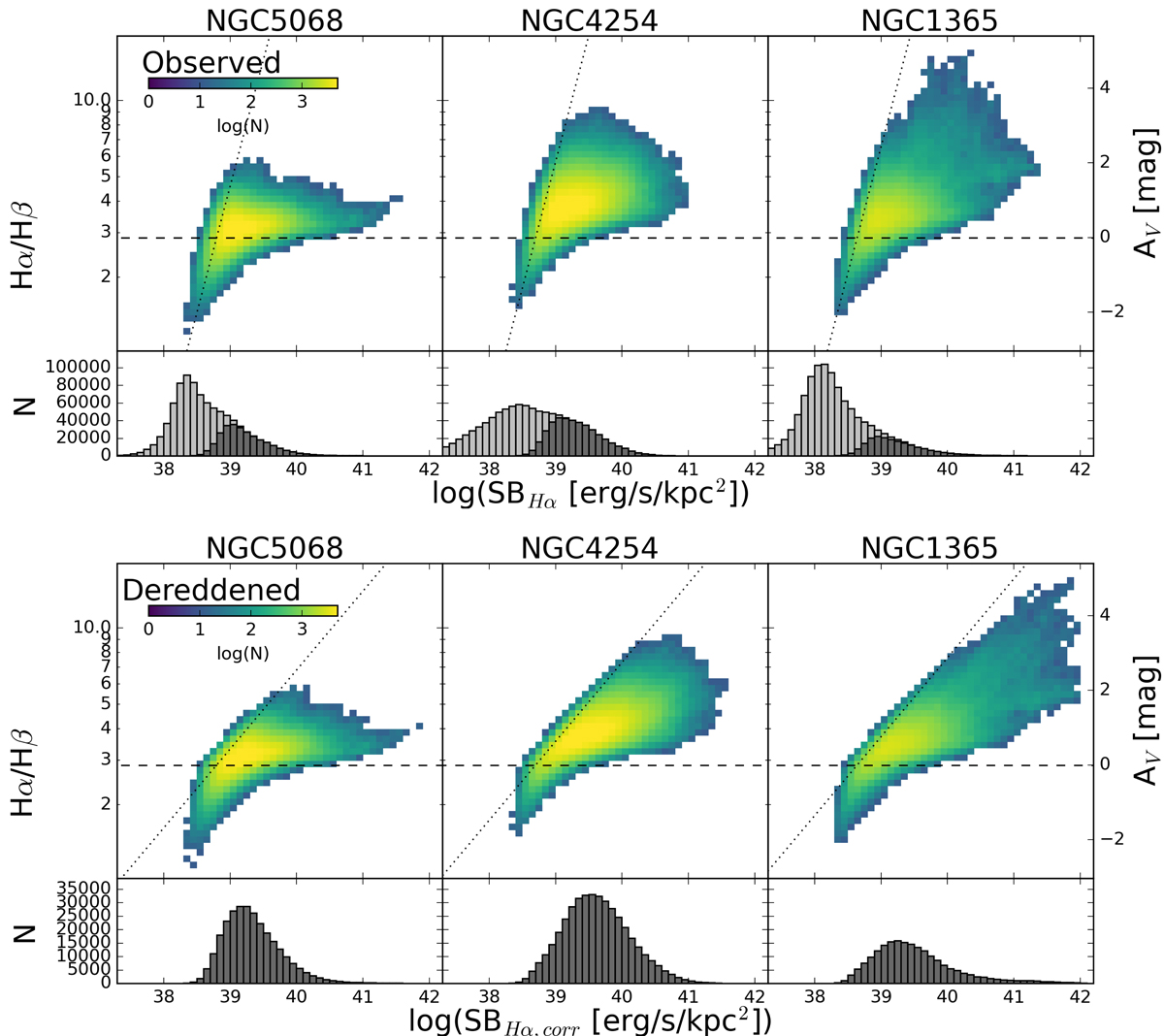Fig. 25.

Download original image
Distribution of pixel-based Hα/Hβ line ratios as a function of observed (top) and extinction corrected (bottom) Hα surface brightness (SBHα) for three galaxies of our sample (see text). We employ a S/N cut of 10 for both lines. Most pixels have Hα/Hβ > 2.86 (dashed line, as predicted by case B recombination for Te = 104 K, ne = 100 cm−3), and those that have ratios below this value are consistent within the errors. Because of this, when de-reddening Hα we apply no correction for those pixels with Hα/Hβ < 2.86. At low Hα surface brightness, our Hβ sensitivity sets an upper threshold on the recoverable value of Hα/Hβ. The value of this threshold for the median Hβ error is indicated in all panels by the dotted lines. Histograms of SBHα are included for each set of plots for pixels that meet our S/N cut (in black) and those that do not (in grey). A significant number of pixels are excluded by requiring an S/N > 10 detection of Hβ. A wide range of extinctions is observed, with no obvious correlation with SBHα. This demonstrates the need for matched resolution constraints on the dust extinction. Within PHANGS-MUSE, the use of the Balmer decrement provides a unique opportunity to perform robust, extinction-corrected SFR measurements across the bulk of the galaxy disc.
Current usage metrics show cumulative count of Article Views (full-text article views including HTML views, PDF and ePub downloads, according to the available data) and Abstracts Views on Vision4Press platform.
Data correspond to usage on the plateform after 2015. The current usage metrics is available 48-96 hours after online publication and is updated daily on week days.
Initial download of the metrics may take a while.


